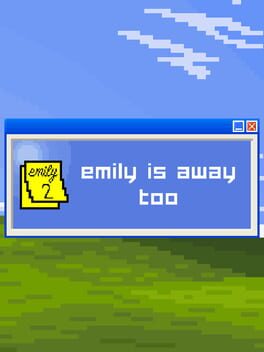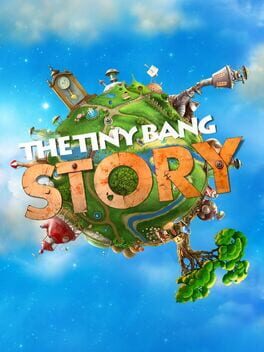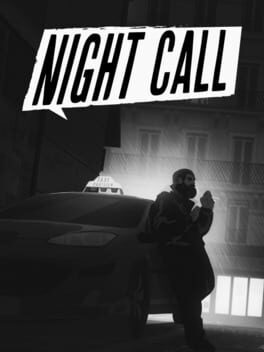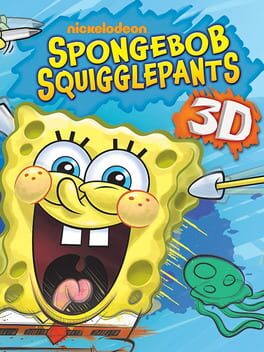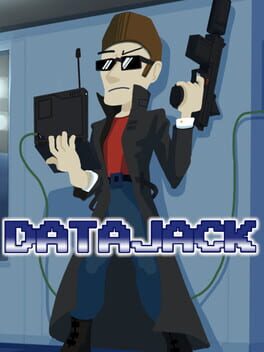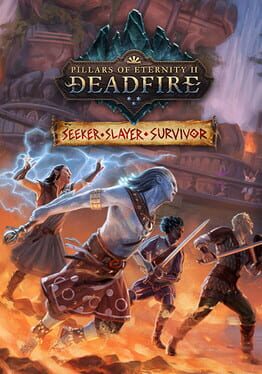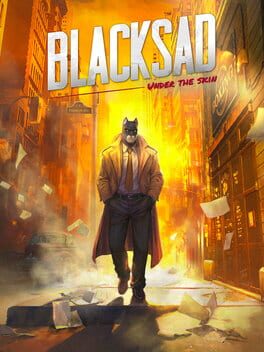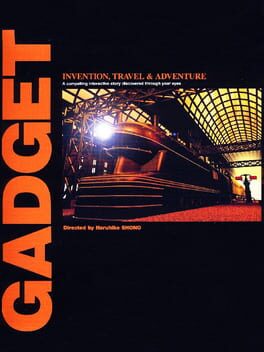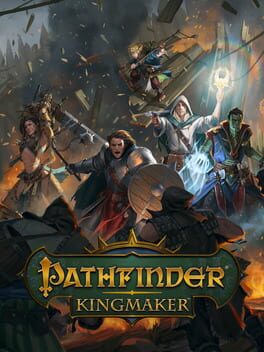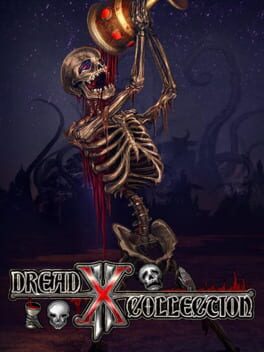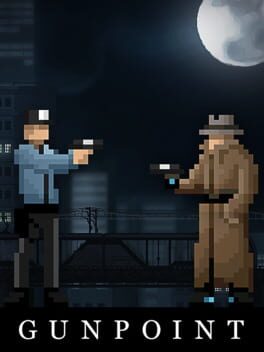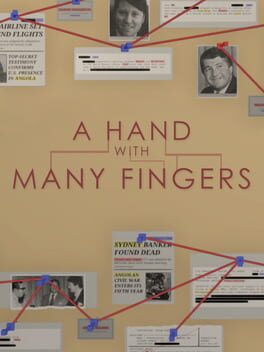Jean_le_Point
2017
"Emily is Away Too" makes you forget you are playing a game and makes you feel like you would chat to people from your high school. You can not make so much wrong, sometimes you need to remember something like someons taste in music. However you can't lose the game, but make it to a different ending, .
A few times you need to react quick in two chat rooms, which can be annoying if you want to respond thoughtful.
The best feature are the old looking YouTube and Facebook pages which will appear during the chats.
A few times you need to react quick in two chat rooms, which can be annoying if you want to respond thoughtful.
The best feature are the old looking YouTube and Facebook pages which will appear during the chats.
2011
2021
The gameplay loop becomes monotonous. After putting in around 10 hours, I abandoned exploring and side quests to focus solely on the main quest until completion.
The top-down view is not ideal and a different perspective of the character would be more appropriate.
Additionally, the camera is too close for effective use of the sniper rifle outside of some boss fights. The majority of enemies are melee fightersv so you will use the shotgun or submachine gun most of the time anyway.
The story is okay. Nothing special. The twist came kinda unexpected, but is just whatever. The game feels longer than necessary and could have been finished sooner.
The top-down view is not ideal and a different perspective of the character would be more appropriate.
Additionally, the camera is too close for effective use of the sniper rifle outside of some boss fights. The majority of enemies are melee fightersv so you will use the shotgun or submachine gun most of the time anyway.
The story is okay. Nothing special. The twist came kinda unexpected, but is just whatever. The game feels longer than necessary and could have been finished sooner.
2019
The first case is fine. Although the story is a pretty generic noir crime case, dialogues with the passengers are still enjoyable.
However, it becomes repetitive in the second case.
After playing the first case, you have seen it all.
Also the puzzles are pretty simple and the killer is kinda obvious from the very beginning. The writing is somewhere between acceptable and pretty okay.
However, it becomes repetitive in the second case.
After playing the first case, you have seen it all.
Also the puzzles are pretty simple and the killer is kinda obvious from the very beginning. The writing is somewhere between acceptable and pretty okay.
I like the different microgames, they are quite varied. The different art styles also provide fun and variety. I really like all the little eastereggs that have been sprinkled in.
Apart from the short playing time of only around 30 to 40 minutes, there's nothing really negative to say. At least it's a fun 30 to 40 minutes game.
All in all, a really fun and entertaining WarioWare clone.
Apart from the short playing time of only around 30 to 40 minutes, there's nothing really negative to say. At least it's a fun 30 to 40 minutes game.
All in all, a really fun and entertaining WarioWare clone.
2013
Pillars of Eternity II: Deadfire - Seeker, Slayer, Survivor offers a combat-focused DLC which provides a break from the heavy story content of the base game. For me, this would have been a welcome change if this expansion hadn't left so much to be desired.
The arena featured in the DLC starts off as fun, but quickly becomes repetitive due to little variety and challenge.
Allowing players to have battles with preset gear instead of their own or implementing more challenging battles would have added much needed depth to this aspect of the game.
Additionally, the text-based sections where party members can permanently die feel like a cheap trial and error mechanic that adds frustration rather than enjoyment to the gameplay experience.
The arena featured in the DLC starts off as fun, but quickly becomes repetitive due to little variety and challenge.
Allowing players to have battles with preset gear instead of their own or implementing more challenging battles would have added much needed depth to this aspect of the game.
Additionally, the text-based sections where party members can permanently die feel like a cheap trial and error mechanic that adds frustration rather than enjoyment to the gameplay experience.
I really like Blacksad and this game captures the atmosphere very well.
We are thrown into the action without a long preamble, the case is interesting and there is a quick reunion with familiar characters from the comics.
Therefore, I would like to recommend this game, but there are far too many things that speak against it and made me stop playing after a short time.
I can overlook rough edges such as the somewhat bumpy animations here and there and the slightly asynchronous voices here and there. The relatively long loading times are also annoying, but I can overlook that too.
The controls and the camera also leave a lot to be desired. Blacksad moves very slowly and imprecisely. I also have the feeling that there is a noticeable input delay.
What I can't overlook are the bugs that ruin the game. The very first time I started the game, I had a completely black screen while the game continued to run normally.
Then on the second try I had an infinite loading screen.
Third try and I could finally play ... Until I was back in Blacksad's office and the bugs got the better of me again, causing me to abandon the game. Either the camera got stuck in some of these close-up scenes and I couldn't get out, or every interactable object took me to a scene I'd seen before.
Sorry, but I really don't feel like loading the last autosave every few minutes.
We are thrown into the action without a long preamble, the case is interesting and there is a quick reunion with familiar characters from the comics.
Therefore, I would like to recommend this game, but there are far too many things that speak against it and made me stop playing after a short time.
I can overlook rough edges such as the somewhat bumpy animations here and there and the slightly asynchronous voices here and there. The relatively long loading times are also annoying, but I can overlook that too.
The controls and the camera also leave a lot to be desired. Blacksad moves very slowly and imprecisely. I also have the feeling that there is a noticeable input delay.
What I can't overlook are the bugs that ruin the game. The very first time I started the game, I had a completely black screen while the game continued to run normally.
Then on the second try I had an infinite loading screen.
Third try and I could finally play ... Until I was back in Blacksad's office and the bugs got the better of me again, causing me to abandon the game. Either the camera got stuck in some of these close-up scenes and I couldn't get out, or every interactable object took me to a scene I'd seen before.
Sorry, but I really don't feel like loading the last autosave every few minutes.
Pathfinder: Kingmaker is an RPG that is a lot of fun at the beginning, but unfortunately quickly becomes redundant. In the game, the kingdom is constantly plagued by threats such as pandemics, wars with neighbours and barbarians. Although the story is okay at the beginning, it eventually becomes uninteresting due to the unreasonably long playing time. What we have here is a story for perhaps 30 to 35 hours stretched to almost 80 hours, according to HLTB.
Another point of criticism is the unnecessarily difficult battles in the later stages of the game. Instead of the enemies becoming stronger and more powerful, you are simply bombarded with an excess of 20 to 30 enemies. This not only affects the game performance, but also the enjoyment of the game.
One annoying aspect is that potential companions can be missed. As these companions are needed for kingdom management, this leads to problems. An example is a companion who is found in an uninteresting location during a single specific main quest. It is possible to spend the entire game without a chamberlain, causing the kingdom to fail and the game to be lost. One could argue that you should simply explore more, but this leads to the next point of criticism.
All quests have an invisible time limit, which reduces the enjoyment of the game. Although it is realistic that NPCs do not stay in one place indefinitely, this gives the player little freedom. What if you want to pursue the main quest before doing the companions' side quests? What if you want to explore the map, but time passes and you run the risk of losing the game? What if you just want to spend a few months in the game managing the kingdom?
The questlog often does not give you enough information. In the majority of the quests you will find yourself wandering all over the world map hoping to finally find the place you are supposed to go. I think it's pretty obvious that this, along with the time limit, is pretty bad design.
Despite these points of criticism, there are also aspects worthy of praise. The level of difficulty can be customised very nicely so that both pros and newcomers can have fun with the game. In addition, kingdom management can be minimised by only taking on the most necessary tasks. The lore of Pathfinder is also explained quite well, so that even players who have never come into contact with Pathfinder before are not completely lost.
Another point of criticism is the unnecessarily difficult battles in the later stages of the game. Instead of the enemies becoming stronger and more powerful, you are simply bombarded with an excess of 20 to 30 enemies. This not only affects the game performance, but also the enjoyment of the game.
One annoying aspect is that potential companions can be missed. As these companions are needed for kingdom management, this leads to problems. An example is a companion who is found in an uninteresting location during a single specific main quest. It is possible to spend the entire game without a chamberlain, causing the kingdom to fail and the game to be lost. One could argue that you should simply explore more, but this leads to the next point of criticism.
All quests have an invisible time limit, which reduces the enjoyment of the game. Although it is realistic that NPCs do not stay in one place indefinitely, this gives the player little freedom. What if you want to pursue the main quest before doing the companions' side quests? What if you want to explore the map, but time passes and you run the risk of losing the game? What if you just want to spend a few months in the game managing the kingdom?
The questlog often does not give you enough information. In the majority of the quests you will find yourself wandering all over the world map hoping to finally find the place you are supposed to go. I think it's pretty obvious that this, along with the time limit, is pretty bad design.
Despite these points of criticism, there are also aspects worthy of praise. The level of difficulty can be customised very nicely so that both pros and newcomers can have fun with the game. In addition, kingdom management can be minimised by only taking on the most necessary tasks. The lore of Pathfinder is also explained quite well, so that even players who have never come into contact with Pathfinder before are not completely lost.
2020
I really enjoyed The Thing in the Lake, Touched by an Outer God, Solipsis, Sucker For Love and The Diving Bell.
Everything else was somewhere between mediocre and just about bearable.
I think it would have been better overall to have only six to eight games in this collection instead of twelve.
Additionally I wish the hub world was a bigger game on its own. I mean give me a first person puzzle game where I am in a house like this including a bunch of puzzles to solve and a little mystery to solve with a playtime round about two hours for a few Euro and I am happy.
Everything else was somewhere between mediocre and just about bearable.
I think it would have been better overall to have only six to eight games in this collection instead of twelve.
Additionally I wish the hub world was a bigger game on its own. I mean give me a first person puzzle game where I am in a house like this including a bunch of puzzles to solve and a little mystery to solve with a playtime round about two hours for a few Euro and I am happy.
2013
Gunpoint is an amazing stealth puzzle game. The missions are entertaining and can be completed in a couple of minutes, keeping gameplay fast-paced and engaging.
The conversations throughout the game are fit the overall tone perfectly and have a bit of humour here and there. The gadgets and abilities of the character are a blast to use, adding an extra layer of enjoyment to the gameplay.
One of the standout features of Gunpoint is its simplicity. There are no unnecessary bells and whistles, allowing players to fully grasp the mechanics within the first few minutes of playing. From there, it's up to you to decide how stealthy, violent, or mischievous you want to be. The mechanics all work flawlessly, and when you make a mistake, it's immediately noticeable, giving you the chance to correct it and improve your performance.
The story about proving your innocence and find the real killer is not particularly original, but fits the game's setting. However, the thread surrounding two weapons manufacturers can be easily lost, although there is some sort of summary before the last few missions.
Despite this, the short playing time of the levels gives them a high replay value, even if the solutions don't differ significantly. Additionally, the soundtrack is amazing, enhancing the overall experience.
There are a couple of downsides to the game. The socket sound effect is way too loud, if you don't turn down sound effects to like 10 percent in the settings menu, which then makes other sound effects a bit too silent. Additionally, the game's duration of a little over two hours in relation to its price of 7€ could be a potential turn-off for some players.
Overall, Gunpoint is a fantastic stealth puzzle game, you might prefer to buy when it is on sale.
With its short playing time, it can be completed in just one evening or whenever you have the time.
The conversations throughout the game are fit the overall tone perfectly and have a bit of humour here and there. The gadgets and abilities of the character are a blast to use, adding an extra layer of enjoyment to the gameplay.
One of the standout features of Gunpoint is its simplicity. There are no unnecessary bells and whistles, allowing players to fully grasp the mechanics within the first few minutes of playing. From there, it's up to you to decide how stealthy, violent, or mischievous you want to be. The mechanics all work flawlessly, and when you make a mistake, it's immediately noticeable, giving you the chance to correct it and improve your performance.
The story about proving your innocence and find the real killer is not particularly original, but fits the game's setting. However, the thread surrounding two weapons manufacturers can be easily lost, although there is some sort of summary before the last few missions.
Despite this, the short playing time of the levels gives them a high replay value, even if the solutions don't differ significantly. Additionally, the soundtrack is amazing, enhancing the overall experience.
There are a couple of downsides to the game. The socket sound effect is way too loud, if you don't turn down sound effects to like 10 percent in the settings menu, which then makes other sound effects a bit too silent. Additionally, the game's duration of a little over two hours in relation to its price of 7€ could be a potential turn-off for some players.
Overall, Gunpoint is a fantastic stealth puzzle game, you might prefer to buy when it is on sale.
With its short playing time, it can be completed in just one evening or whenever you have the time.
A Hand With Many Fingers takes inspiration from a real-life conspiracy, which adds a attractive layer of authenticity to the gameplay. For those familiar with the background, the overall experience won't unveil anything groundbreaking, but it still manages to captivate and entertain.
One commendable aspect is its ability to generate a shady atmosphere that keeps players on edge. The game effectively employs subtle techniques such as the sounds of other people despite the player being alone or a car conveniently halting right in front of their office window. These elements contribute to a steady build-up of paranoia, adding to the overall tension and suspense of the narrative.
While the game successfully builds up this paranoia, there is a missed opportunity to further heighten this feeling throughout the entire experience. I wish there had been a moment or two at the beginning that would have made the player feel safe again. For example, the phone rings once, but no one is on the line. From this point on, you are supposed to feel insecure and observed. Perhaps there should have been another call a little later, in which the situation is clarified and you briefly have the feeling that everything is okay.
Additionally, the mechanics surrounding the archive in the game are well-executed. Players will find themselves immersed in the process of sorting through files, piecing together clues, and uncovering hidden secrets. This particular aspect of the game adds depth and complexity to the overall experience, providing a satisfying challenge for players to overcome.
However, there are a couple of areas where A Hand With Many Fingers falls short. The absence of a hint system can be frustrating for players who may find themselves stuck at certain points in the game. During the last ~10 minutes, I felt overwhelmed with all the information on the conspiracy board, that I really would have appreciated a hint to push me into the right direction.
Lastly, the ending feels rather abrupt. It would have been satisfying to see a more fleshed-out ending.
Despite minor shortcomings, the game offers a unique and intriguing dive into the world of conspiracy. With its basis on a real story and its effective build-up of tension, the game manages to entertain players, making it a worthwhile experience for those interested in delving into a short mystery-filled adventure.
One commendable aspect is its ability to generate a shady atmosphere that keeps players on edge. The game effectively employs subtle techniques such as the sounds of other people despite the player being alone or a car conveniently halting right in front of their office window. These elements contribute to a steady build-up of paranoia, adding to the overall tension and suspense of the narrative.
While the game successfully builds up this paranoia, there is a missed opportunity to further heighten this feeling throughout the entire experience. I wish there had been a moment or two at the beginning that would have made the player feel safe again. For example, the phone rings once, but no one is on the line. From this point on, you are supposed to feel insecure and observed. Perhaps there should have been another call a little later, in which the situation is clarified and you briefly have the feeling that everything is okay.
Additionally, the mechanics surrounding the archive in the game are well-executed. Players will find themselves immersed in the process of sorting through files, piecing together clues, and uncovering hidden secrets. This particular aspect of the game adds depth and complexity to the overall experience, providing a satisfying challenge for players to overcome.
However, there are a couple of areas where A Hand With Many Fingers falls short. The absence of a hint system can be frustrating for players who may find themselves stuck at certain points in the game. During the last ~10 minutes, I felt overwhelmed with all the information on the conspiracy board, that I really would have appreciated a hint to push me into the right direction.
Lastly, the ending feels rather abrupt. It would have been satisfying to see a more fleshed-out ending.
Despite minor shortcomings, the game offers a unique and intriguing dive into the world of conspiracy. With its basis on a real story and its effective build-up of tension, the game manages to entertain players, making it a worthwhile experience for those interested in delving into a short mystery-filled adventure.
2014
Kirby Triple Deluxe offers a delightful variety of levels, each with its own unique charm and style. Despite sharing themes, the game manages to keep things fresh and engaging throughout. This reminds me of Wario Land 4.
However, one minor annoyance lies in the Sunstone collection mechanic. To progress, players are required to gather these Sunstones scattered throughout each level, which can feel cumbersome.
It is not that bad, you most likely will find all the Sunstones you need while playing the levels and won't need to replay them over and over.
I am just not a big fan of having to collect stuff in order to progress in general.
One standout aspect of Kirby Triple Deluxe is the remarkable usage of the 3D-System's 3D-feature. The developers skillfully play with depth perception and add a layer of excitement to the gameplay. I think I might have enjoyed it even more, if I was playing on a 3DS model (I have a N2DSXL).
While the game is undoubtedly enjoyable, some gameplay features feel a bit overused. It would have been nice to see more variety in certain mechanics to keep the gameplay fresh.
One glaring flaw is the final boss fight, which drags on for far too long. While the initial excitement is present, it quickly becomes a test of endurance. A shorter, punchier battle, for e.g. only the first three stages, would have been enough. The unnecessary length can dampen the overall satisfaction and makes it feel like a chore.
As a nostalgic nod to fans of Kirby's Dream Land on the GameBoy (and maybe other Kirby games), a lot of the music in Kirby Triple Deluxe is a lovely throwback. The familiar tunes add an extra layer of warmth and enjoyment to the overall gaming experience.
Kirby Triple Deluxe offers unique and captivating levels that will keep you engaged. Although the Sunstone collection can be bothersome, the 3D-feature and lovely soundtrack make up for the minor shortcomings.
However, one minor annoyance lies in the Sunstone collection mechanic. To progress, players are required to gather these Sunstones scattered throughout each level, which can feel cumbersome.
It is not that bad, you most likely will find all the Sunstones you need while playing the levels and won't need to replay them over and over.
I am just not a big fan of having to collect stuff in order to progress in general.
One standout aspect of Kirby Triple Deluxe is the remarkable usage of the 3D-System's 3D-feature. The developers skillfully play with depth perception and add a layer of excitement to the gameplay. I think I might have enjoyed it even more, if I was playing on a 3DS model (I have a N2DSXL).
While the game is undoubtedly enjoyable, some gameplay features feel a bit overused. It would have been nice to see more variety in certain mechanics to keep the gameplay fresh.
One glaring flaw is the final boss fight, which drags on for far too long. While the initial excitement is present, it quickly becomes a test of endurance. A shorter, punchier battle, for e.g. only the first three stages, would have been enough. The unnecessary length can dampen the overall satisfaction and makes it feel like a chore.
As a nostalgic nod to fans of Kirby's Dream Land on the GameBoy (and maybe other Kirby games), a lot of the music in Kirby Triple Deluxe is a lovely throwback. The familiar tunes add an extra layer of warmth and enjoyment to the overall gaming experience.
Kirby Triple Deluxe offers unique and captivating levels that will keep you engaged. Although the Sunstone collection can be bothersome, the 3D-feature and lovely soundtrack make up for the minor shortcomings.

